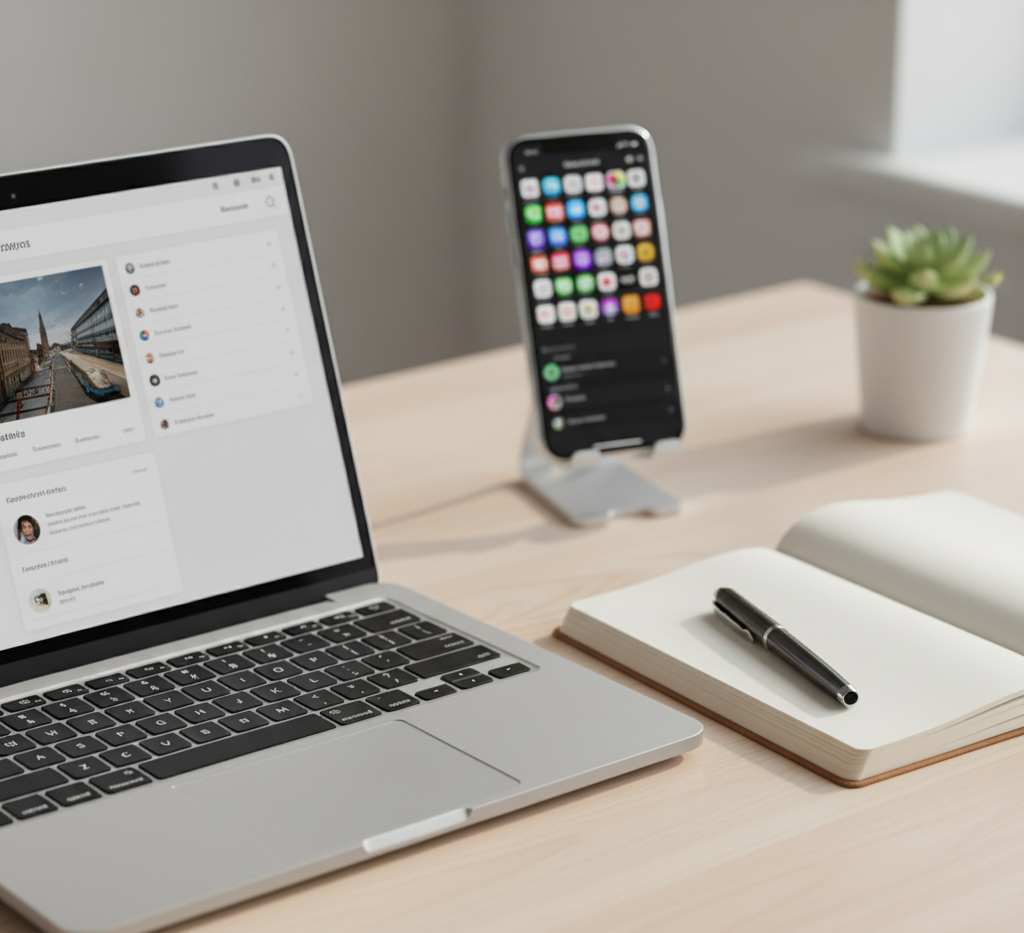Do you ever glance at your to-do list and feel a quiet wave of guilt wash over you? That unsettling sense that you should be further ahead — in work, goals, maybe even life itself? You’re not alone. Many of us, especially high-achieving professionals and lifelong learners, live with a low hum of “I’m not doing enough.”
I’ve been there, too — that constant pressure to catch up, even when there’s no clear finish line. It’s exhausting, isn’t it? The truth is, feeling behind isn’t really about time — it’s about perception. And perception, thankfully, is something we can retrain.
In this article, we’ll explore how to stop feeling behind all the time through simple, grounded shifts in mindset, rhythm, and self-compassion. You’ll leave with practical tools to realign your focus, reclaim calm, and move at your own pace — without guilt.
1. Recognize That “Behind” Is a Story, Not a Status

Most of us use “behind” as if it’s a measurable fact — like being late to a meeting. But in reality, it’s a feeling, not a number.
The world moves fast. Social media accelerates that pace by showing us everyone else’s milestones on loop: new launches, dream trips, glowing updates. It’s easy to forget that those are highlight reels, not timelines.
The truth? You’re not behind — you’re just comparing your process to someone else’s progress.
Shift the Story
Try this small mental reframing:
- Instead of “I’m behind,” say “I’m in progress.”
- Instead of “I should’ve done more,” ask “What matters most right now?”
- Instead of measuring your speed, measure your alignment — are you moving in the right direction?
The story we tell ourselves about time shapes how we experience it. And choosing a gentler story can instantly calm that invisible race we think we’re running.
Key Takeaway: You’re not late to your own life — you’re right on time for your path.
2. Redefine Productivity to Include Rest and Reflection
For many professionals and creatives, productivity feels like proof of worth. If you’re not constantly producing, you feel like you’re falling behind.
But here’s the paradox: the more we chase productivity, the less fulfilled we feel. Because true progress doesn’t come from constant output — it comes from intentional focus and sustainable rhythm.
The Flow Framework
Try organizing your energy — not your hours — around three types of work:
- Deep Work: Focused, creative, or strategic tasks that move the needle.
- Supportive Work: Emails, meetings, admin — necessary, but not defining.
- Restorative Time: Reflection, rest, and quiet. These refill your creative tank.
When you balance these three intentionally, you stop feeling like you’re treading water and start noticing flow.
Personally, I began scheduling “white space” into my week — a few hours of unscheduled time. At first, it felt indulgent. Now, it’s sacred. It’s when clarity usually shows up.
Key Takeaway: Rest isn’t time off; it’s part of your progress.
3. Create a Personal Definition of “Enough”

Here’s a quiet truth no one tells you: “Enough” is not a universal standard.
If you don’t define it, the world will do it for you — and its version will always move the goalpost.
Think about it:
- When is your inbox “empty enough”?
- When is your business “successful enough”?
- When are you “doing enough”?
Without clear boundaries, “enough” becomes endless.
The Enough Exercise
Take five minutes today and write this sentence three times, filling in the blank:
- “I’ll know I’m doing enough when ________.”
- “A balanced day looks like ________.”
- “If I have time for ________, I’m on track.”
You’ll start noticing that your version of “enough” is often gentler — and far more achievable — than the version you’ve been chasing.
Key Takeaway: You stop feeling behind when you decide what “enough” actually means.
4. Practice Digital Minimalism to Reduce Mental Noise
Feeling behind often has less to do with what you’re doing — and more to do with what’s stealing your attention. Every notification, email, and endless scroll chips away at your sense of presence.
Simple Digital Decluttering Practices
- Turn off non-essential notifications.
- Keep your phone out of reach during focus work.
- Batch check emails twice a day.
- Replace morning scrolling with journaling or silence.
Even a small digital reset can dramatically reduce the background noise that fuels that “I’m always behind” feeling.
I used to check Slack and email first thing in the morning. It felt like “getting ahead,” but really, it was just starting the day on someone else’s agenda. Now, I wait until after my morning coffee — and those quiet 30 minutes set the tone for everything.
Key Takeaway: Clarity thrives in quiet — not in constant connection.
5. Embrace Seasonal Progress Instead of Constant Growth

Nature doesn’t bloom all year — yet we expect ourselves to. Constant growth sounds noble, but it’s unsustainable.
You’re meant to move in seasons — of learning, creating, resting, and evolving.
Identify Your Current Season
Ask yourself:
- Am I in a season of planting (learning, experimenting)?
- Growing (creating, building)?
- Harvesting (launching, sharing)?
- Resting (recharging, realigning)?
Once you know your season, you can stop judging yourself for not being in another.
For example, during my “planting” seasons, I often read, reflect, and rebuild habits quietly behind the scenes. There’s no visible progress — but those seasons are where the next level of clarity begins.
Key Takeaway: You’re not behind — you’re just in a different season of becoming.
6. Anchor Your Days with One Simple Win
Overwhelm breeds from trying to do everything.
Peace begins when you focus on something.
Every morning, write down just one meaningful win you want to create today. Not ten. Just one.
It could be:
- Finishing a key project milestone.
- Taking a full lunch break without multitasking.
- Having an honest conversation you’ve been avoiding.
Completing that one intentional act trains your brain to recognize progress, not pressure.
As silly as it sounds, I once started ending my workday by writing a “done list” instead of a to-do list. Seeing what I had already finished created a quiet sense of enoughness. It’s a gentle reminder: you’re already moving forward.
Key Takeaway: Small, consistent wins replace the illusion of being behind.
7. Reconnect with the Present Moment
The feeling of being behind comes from mentally living in the future — in deadlines, goals, or hypothetical “shoulds.” The antidote? Presence.
When you bring your attention back to now, you realize that in this moment, you’re not behind at all — you’re exactly where you are.
3 Grounding Practices
- Micro Pauses: Take three deep breaths between tasks.
- Mindful Movement: Stretch, walk, or simply feel your feet on the floor.
- Gratitude Check: Name one thing that’s already working.
Presence doesn’t erase your responsibilities — it just returns your mind to a place of calm control.
Key Takeaway: You can’t feel behind while you’re fully here.
Conclusion

That restless feeling of being “behind” is one of the most common modern anxieties — but it’s also one of the most reversible.
When you rewrite your story, redefine enough, and realign your rhythm, you slowly step out of the race and back into flow. You remember that life isn’t a timeline — it’s a practice of attention, presence, and choice.
So, what if this week, you stopped chasing time and started trusting your pace instead?
If you found this article helpful, you’ll love our companion piece, “Declutter Your Mind: Mental Minimalism 101”, which expands on creating more mental space for calm and focus.
You’re not behind. You’re right where you need to be — becoming who you’re meant to become.





